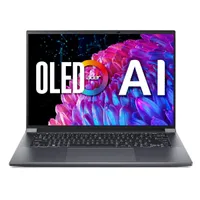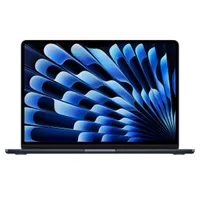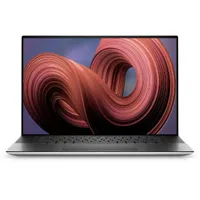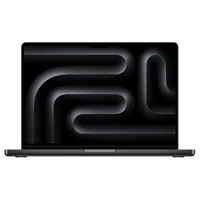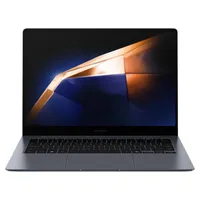Best laptop for music production 2025: For home studios and mobile music-making - tested by experts
My pick of the best laptops for making music, plus hands-on reviews, stress testing, and what to look for when buying
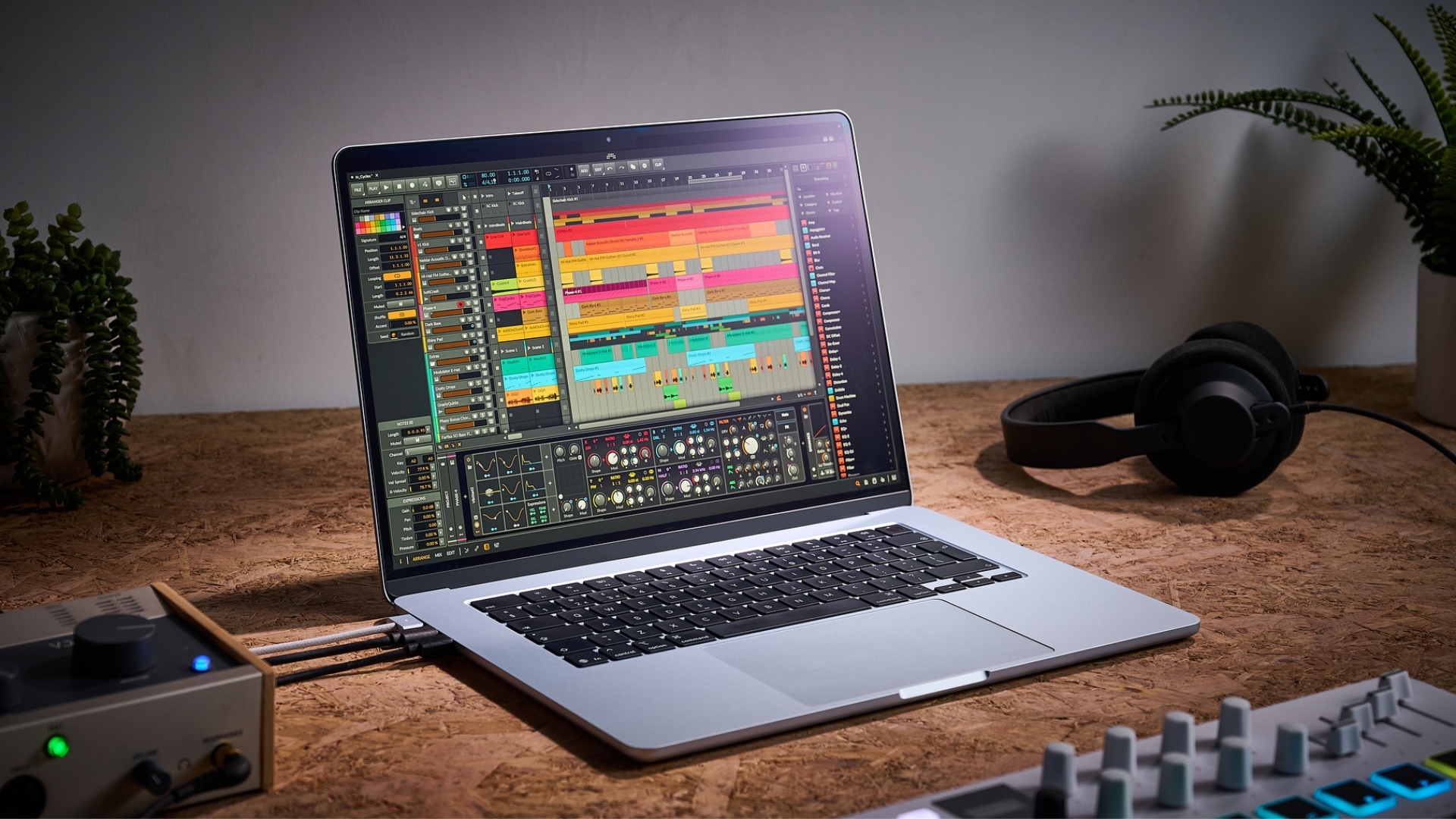
Just a few years ago you might have been sneered at for suggesting that someone use one of the best laptops for music production at the heart of their studio. Desktop computers have reigned supreme for a long time now, but thanks to recent advances in CPU power and chipset efficiency, a laptop is now more than powerful enough to handle the vast majority of music-making tasks. As well as having the requisite power, they’re also portable, which means you get the advantage of taking all your favourite plugins and instruments with you wherever you go.
If you’re buying a music production laptop, then one of the key things you’ll need to look at is the CPU and RAM, as these are the most critical components for ensuring good performance when making music. I recommend at least an i5 or Ryzen 5 CPU (ideally an i7 or Ryzen 7) for Windows users, while any of the Silicon chip Macs will be sufficient. I’d also suggest that you get at least 16GB of RAM on a Windows machine, with 8GB of Mac’s unified RAM being plenty for the majority of production tasks.
There are a lot of laptops to choose from nowadays so to make things simple, I’ve gone for six top picks that should cover the needs of most creative types. If you want the best overall laptop for music production and money is not an issue, then you should pick yourself up an Apple MacBook Pro M4. It’s the most powerful and efficient laptop you can buy right now, but it does cost. If you want something a little cheaper, then I’d suggest you look at the Apple MacBook Air M2 for excellent performance on a lesser budget.
For Windows users, I can’t recommend the Asus ProArt P16 enough. It delivers Mac-like performance without having to learn a new OS, has a stunning screen, and can handle video-editing and other creative tasks. It is expensive though, so if you haven’t got as much budget check out the Acer Swift X14, which will handle the majority of production tasks while remaining relatively affordable.
If you’re new to laptops for music production and are unsure about anything, I’ve pulled from my 20 years of music-making experience in several sections throughout this guide. I’ve got a how to choose section that will guide you through the buying process, as well as an in-depth FAQs that answers loads of common questions I’ve come across over the years. If you’re new to computing in general or unsure of any of the myriad acronyms used to discuss laptops, there’s also a glossary of key terms to get you up to speed quickly.
My top picks
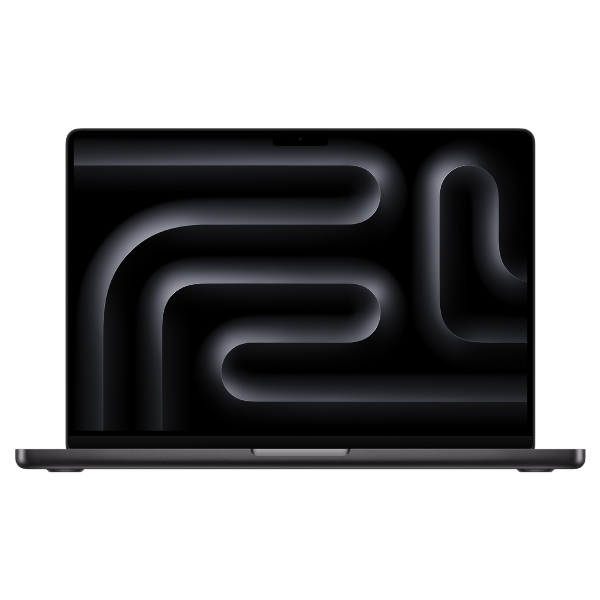
If you want the best of the best for music-making, the Apple MacBook Pro M4 is the top dog when it comes to laptops for music production. Effortlessly powerful and efficient, it’s a mobile powerhouse for production tasks.
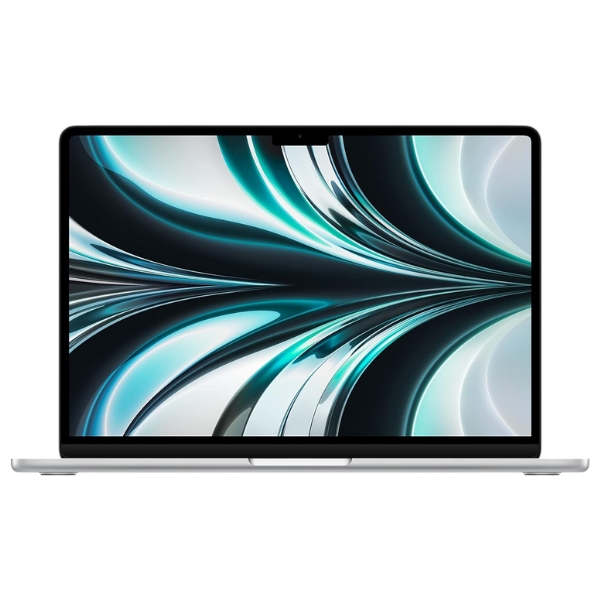
With the increasing scarcity of M1 machines, the Apple MacBook Air M2 is my top pick if you want a powerful music-making machine without spending huge amounts of money. It will handle the vast majority of production tasks and is nice and portable.
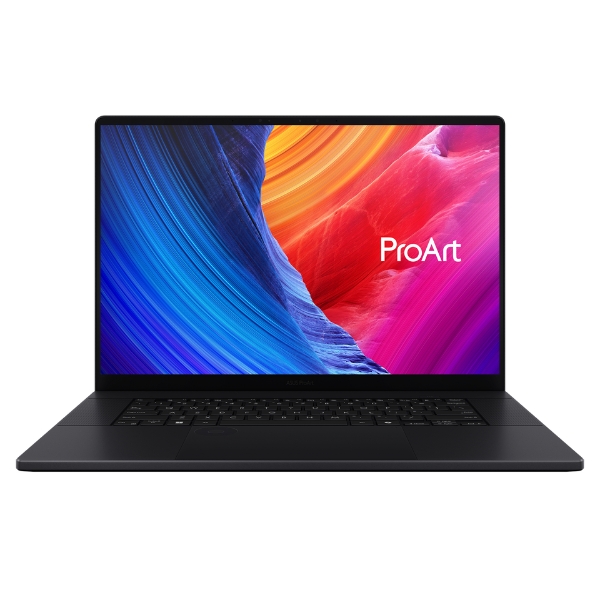
If you want powerful performance but prefer a Windows OS, the Asus ProArt P16 is an absolute beast for music production. Easily able to handle production tasks it’s also got a powerful GPU, making it a great all-rounder for creatives.
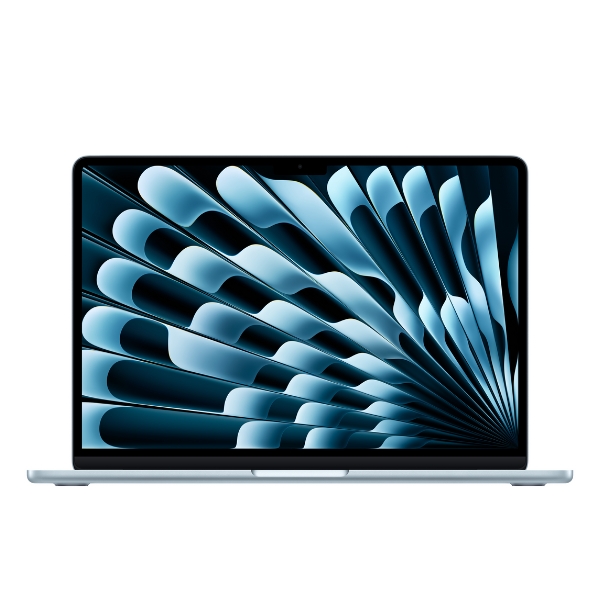
If you want a machine that’s compact enough to chuck in a backpack but powerful enough for complex productions, the Apple MacBook Air M4 is ideal. It’s incredibly lightweight yet durable thanks to the aluminium chassis, and ridiculously powerful.
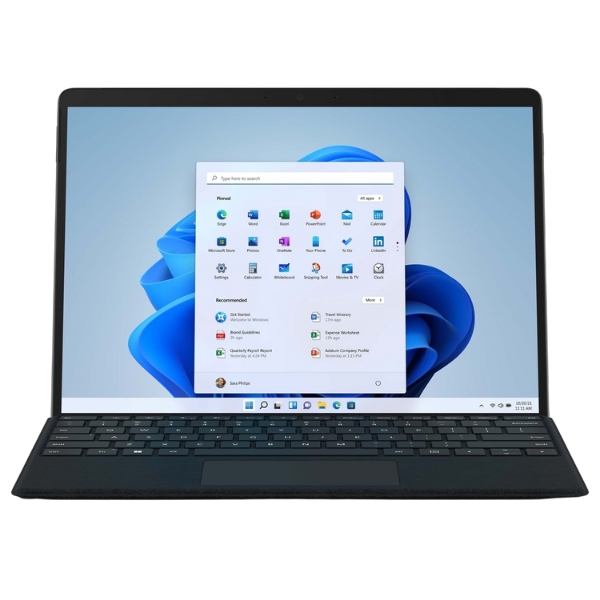
For those who want a combined tablet and laptop, the Microsoft Surface Pro 9 delivers fantastic performance for production. The fact that you can split it apart from the keyboard makes it super handy for a variety of tasks.
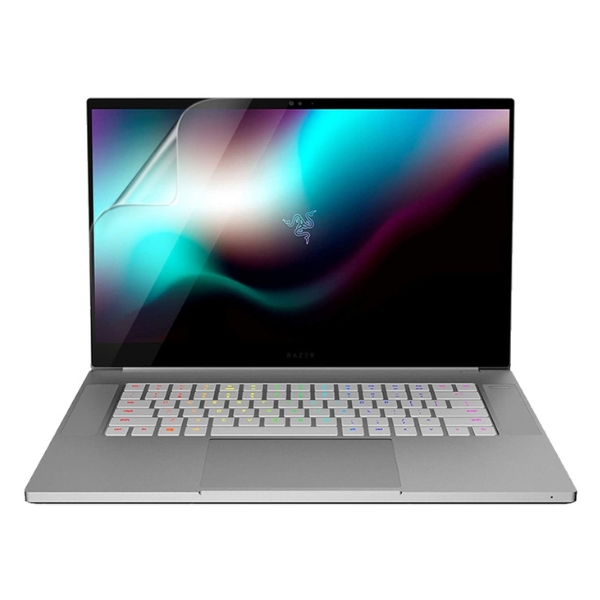
If you’re the sort that wants to play CyberPunk 2077 alongside your music-making exploits, this Razer Blade 15 Studio Edition has a very powerful GPU built in. It’s a bit more stylish than your average gaming laptop, too.
Best overall
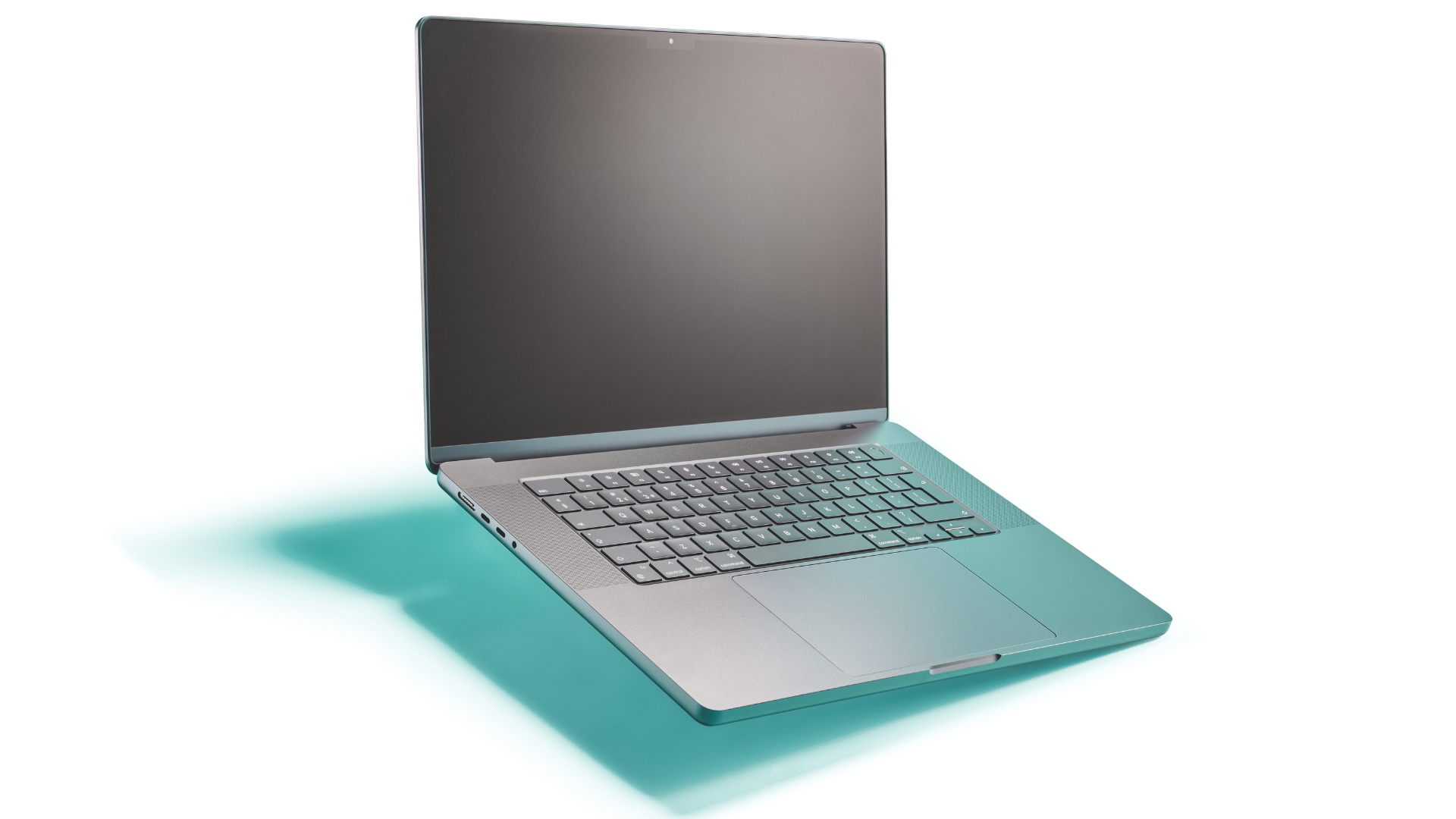
1. Apple MacBook Pro M4 16"
Our expert review:
Specifications
Reasons to buy
Reasons to avoid
💻 The MacBook Pro M4 16" is the ultimate music-making laptop if you can afford one. It delivers a simply staggering amount of power for running an incredible number of plugins, while the 16" screen is an absolute joy to work on and there's plenty of connectivity for additional screens, hubs, you interface, and any other accessories.
✅ Buy if you want the best of the best and money is no object: Max out one of these beasts and you'll certainly pay for it, but you'll also have the most capable, future-proofed machine on the planet.
❌ Avoid if you want something more down to earth: There are much cheaper and still very capable Apple (and non-Apple) laptops out there.
Overview: Featuring improved battery life, Apple Intelligence, and some slight performance gains, the Apple MacBook Pro M4 16-inch is undoubtedly the best laptop for music production in the world right now. Is it overkill for most users? Probably. But this is the machine to buy if you want to future-proof yourself and enjoy your mobile music-making to its fullest.
Design: The look and feel of the MacBook Pro M4 is simply sumptuous. Everything is put together beautifully, and many will be glad to see the lack of the dreaded Touch Bar. The aluminum unibody gives it a real feel of durability, and the slick looks are second to none. It is heavy though, so bear in mind if you're traveling a lot you might find the 14-inch version a tad more portable.
There are plenty of ports available for connecting your audio interface and any other peripherals you have thanks to three Thunderbolt/USB 4 ports, with a dedicated HDMI if you need to hook up to a larger screen, and an SDXC card slot should you need some additional storage.
Features: Both 16" Pro models offer a great music production experience with their large 16.2" displays - the biggest screens bar just one model in this round-up - but, really, you are looking at a big price difference, compared to other Macs here. The screen is fantastic though, and if you're working exclusively on the laptop screen then that extra real estate will come in handy on projects with lots of plugins.
Usability: The fully Maxed-out MacBook Pro, in this case with the all-new M4 Max processor, is probably - okay certainly - too much for many music tasks. We've rarely pushed our 24GB RAM Air, yet the Max brute starts at 48GB RAM! Similarly, you shouldn't really pay the extortionate extra cash for an 8TB storage option when a decent separate fast hard drive will bolster the 1TB base model for much less outlay.
You can get a cheaper 16" MacBook Pro option with the M4 Pro processor, which with a (approx) 17% price drop over the full-fat M4 Max is also a more sensible offering. Either chip will deliver stunningly quick performance, even if your project is loaded with tracks, virtual instruments, and plugins.
Battery life: Still, the 16" MacBook Pro boasts the best battery life here, with up to 24 hours. This stat is for watching programs on Apple TV, so for actual music-making tasks, we imagine this number will be a little less than that. Reports suggest that you can still get a good 15-17 hours out of it even when doing more intensive tasks, which is a pretty phenomenal performance all things considered.
To conclude, this is a Mac that will last years before you think you need an upgrade - not common in Apple circles - so if anyone is wondering what to buy us for Christmas, we could easily fill that 8TB and 128GB of RAM if you pushed us… So, go on then.
Test | Verdict | Score |
|---|---|---|
Battery life | Up to 24 hours | ★★★★★ |
Usability | Power for all tasks | ★★★★★ |
Display | Big and clear | ★★★★★ |
Connectivity | A decent range of ports | ★★★★☆ |
Best budget
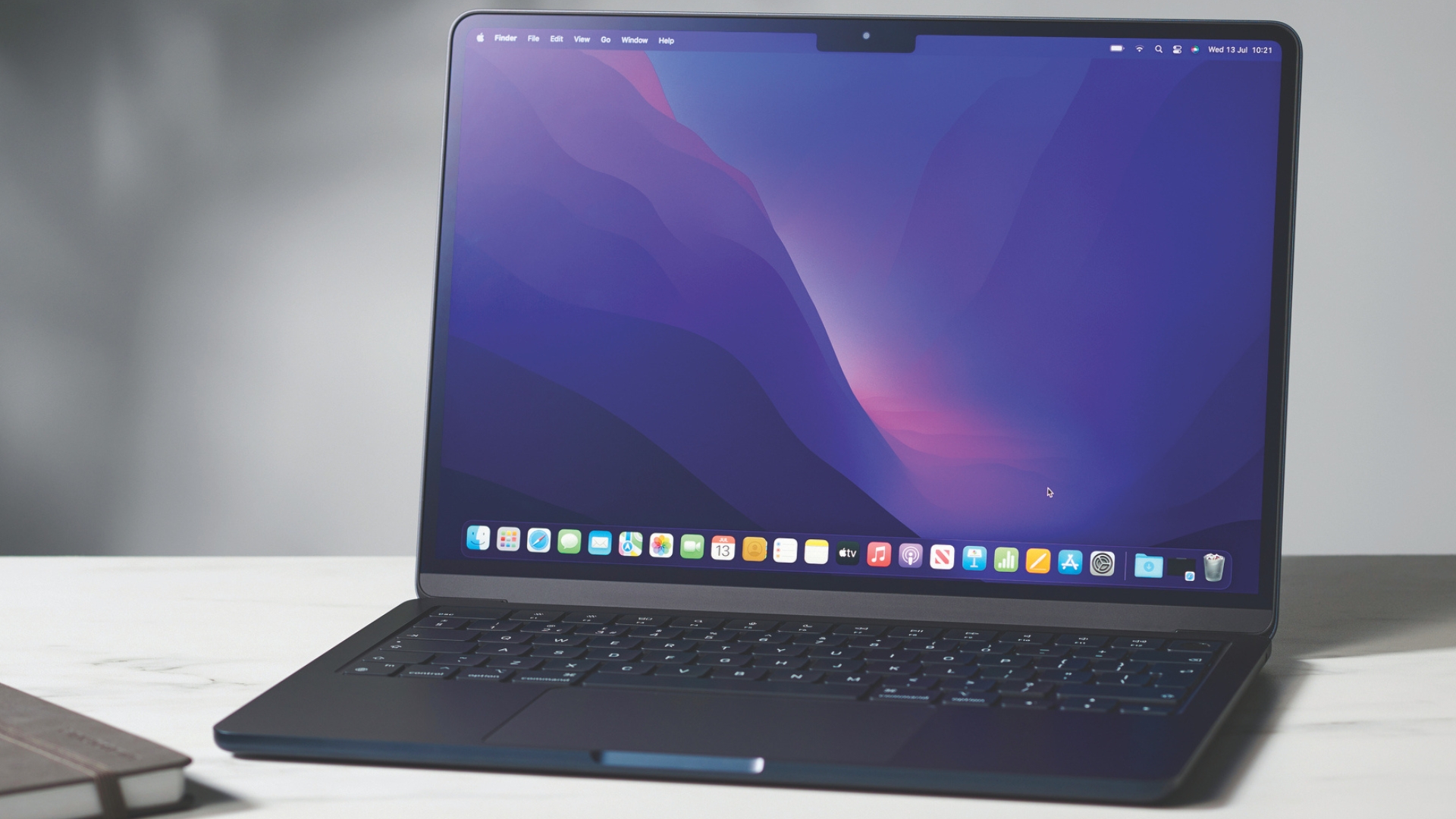
Specifications
Reasons to buy
Reasons to avoid
💻 The MacBook Air M2 is for the musician who wants an Apple machine on a budget. Available for below a grand nowadays, it's got plenty of power for processing audio, and is lightweight and compact for taking it to mobile recording sessions or into a traditional studio.
✅ Buy if you don't need the very latest tech: It's slim, lightweight with great battery life, while the M2 chip should serve you through many happy years of music-making.
❌ Avoid if you have a bit more to spend: Upgrading to the M3 model isn't as expensive as you might think, so you could gain a little more performance with some extra spend.
Overview: Apple's latest MacBook Pros and Airs all feature the company's latest M3 chips, with only this model retaining the M2. But that doesn't mean it is found lacking in the music production department.
Design: At just 1.24kg and just 11.3mm deep, the Air M2 is still a fabulously portable option, and its lack of a fan gives it an advantage in the noise stakes when it comes to music making as well. As with all Apple devices everything feels super slick, quite literally too, the MacBook Air is a slippery thing so be careful taking it out of your bag.
Features: You're not likely to use them for mixing, but the speaker sound is very good with Spatial Audio support and definitely a good option for checking your mix as part of your regular tests. The screen isn't the biggest here so you may find things getting a little cluttered, but it really is beautiful, offering a nice crisp display that's perfect for deep diving on waveforms.
Usability: In terms of performance, it's not as quick as some of the beefier MacBook Pro models, but it's no slowcoach either. The M2 chip does astoundingly well with most major music tasks. The only thing we found out of reach was doing orchestral scores with loads of VST instruments, for regular music-making though, you'll find plenty of power here.
Battery life: The battery life of the Air is good, quoted at 18 hours, and more than a match for most Windows laptops. As always, actual usage will differ and will likely be less than the quoted number. Our MacBook Air M2 delivered exceptional battery life, lasting a good 6 hours with plenty to spare despite spending a full day mixing and recording.
The Air M2 is still a beautiful and compact MacBook choice, and the cheapest portable way to get into Mac music-making. It still packs a punch for most music tasks, but you might consider the Air M3 if you have the extra cash for a 20-25% uplift in power.

“While this uplift in performance isn't huge between the M1 and M2, just wait and see what happened when we turned to a much older 2017 iMac (with an Intel core i5 processor) and did the same Logic benchmark test. It struggled to get to 34 tracks, a third of those handled by the new M2, so if nothing else, our tests prove how much both the M1 and M2 chips have moved processing on from the good old Intel days!”
Read more: Apple MacBook Air M2 review
Test | Verdict | Score |
|---|---|---|
Battery life | Up to 17 hours | ★★★★★ |
Usability | Perfect for music making | ★★★★★ |
Display | Not the biggest, but very clear | ★★★★☆ |
Connectivity | You'll need a hub | ★★★☆☆ |
Best Windows
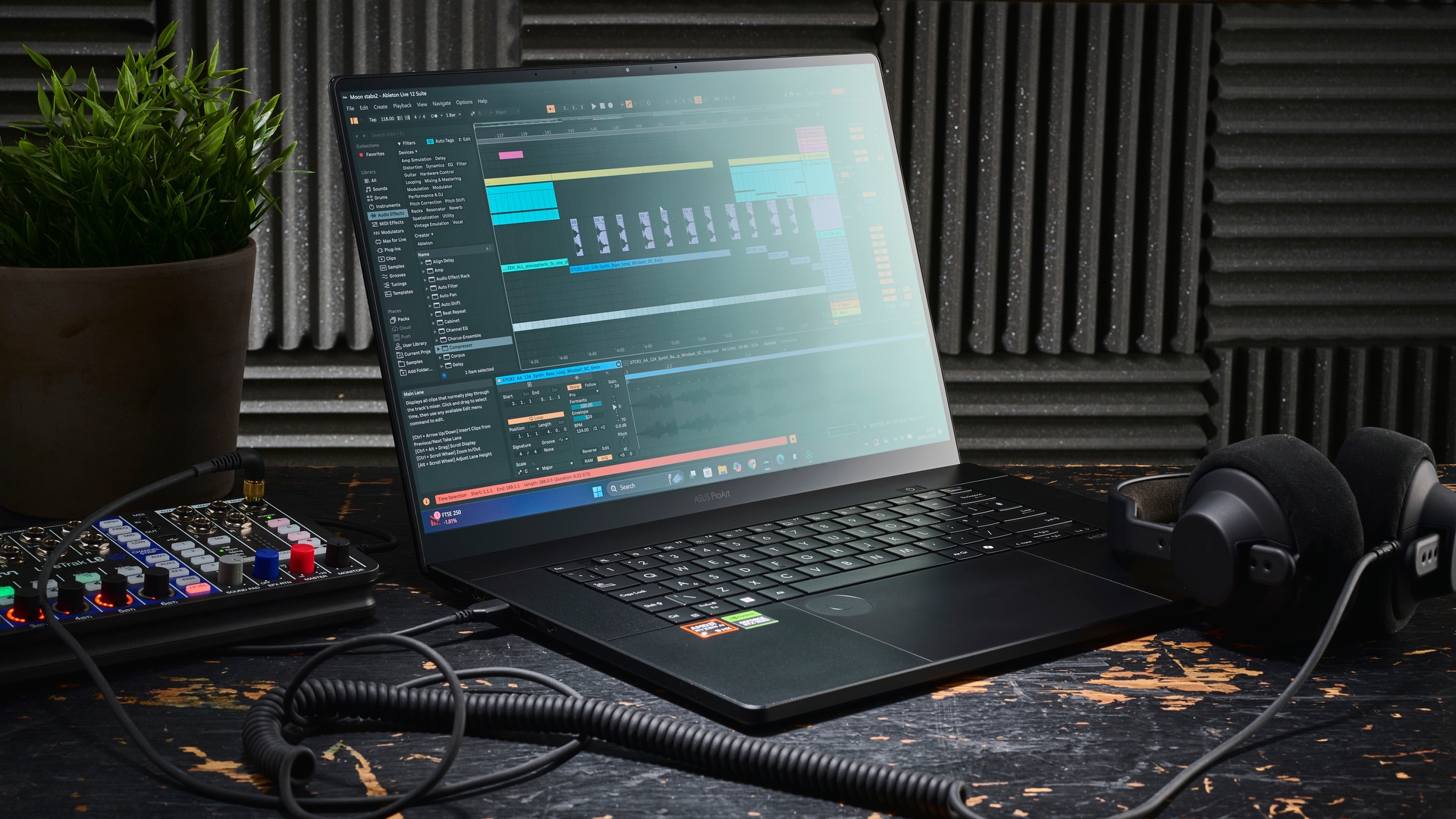
Specifications
Reasons to buy
Reasons to avoid
💻 The Asus ProArt P16 is ideal for musicians who want the same level of power a MacBook offers but don't like working on macOS. It's astoundingly powerful, looks super sleek, and has a very rugged build quality which means you won't mind chucking it in a backpack to take on the go.
✅ Buy if you want a high-performance Windows machine: In my testing the ProArt P16 easily dealt with hundreds of tracks, making it great for heavy music-making tasks.
❌ Avoid if you record in the same space that you mix: When under load the fans on the P16 are pretty loud, which could potentially ruin a recording.
Overview: Despite the popularity of MacBooks for music production, using a Windows laptop is not the disadvantage it once was. Today’s Windows laptops deliver phenomenal power, and the Asus ProArt P16 is one of the most powerful non-Apple laptops I’ve had my hands on in the last few years.
Design: It’s a very sleek-looking laptop, eschewing the gaudy styling you find on some Windows machines for a subtle all-black aesthetic. A 16-inch 4K OLED screen means that even Pro Tools’ ancient UI looks super sharp, but it is very glossy so you’ll need to adjust it in brightly lit spaces. There’s a lot of venting on the bottom so it will get warm in your lap under heavy load, and when the fans kick in it can get pretty loud.
Performance: There’s a good amount of touchpad space, plus the addition of an additional circular control which can cover some additional functionality in apps like Photoshop and Da Vinci. It’s a shame there’s no dedicated functionality for any music-making apps though. I found the keybed to be nice and comfortable, with the backlighting helping me find my way around in lower light. The short enter button isn’t my thing, but it doesn’t take long to adapt to.
In my D-Verb test the ProArt P16 delivered a phenomenal performance, only maxing out when I ran 400 tracks with 5 instances of D-Verb each, which is a staggering 2,000 plugin instances. I’ve never used that many plugins in one session, so there are few music-making tasks the P16 will be unable to handle.
Battery life: As you might expect for a laptop with this much power, the battery life isn’t exactly staggering. I got 6 hours out of it which included setup, the demanding stress tests, and the recording of a demo for my band which I think is pretty decent. If you’re going for an all-day session though, you’ll want to keep the (rather bulky) charger handy.

“Whether or not musicians should go for this over a similarly priced MacBook is merely a case of what operating system you prefer, because the Asus ProArt 16 has plenty of power to compete with silicon chip Apple machines, and it has that professional look sans any garish RGB lighting. It really is a viable alternative for those who don’t want to commit to the Apple ecosystem.”
Read more: Asus ProArt P16 review
Test | Verdict | Score |
|---|---|---|
Battery life | Up to 6 hours | ★★★★☆ |
Usability | Loads of great features but loud fans | ★★★★☆ |
Display | Large and high definition | ★★★★★ |
Connectivity | Plenty of connectivity options | ★★★★★ |
Best portable

Specifications
Reasons to buy
Reasons to avoid
💻 The Apple MacBook Air M4 is the perfect match for music makers who want ultimate power in an easily transportable laptop. My review model absolutely smashed the stress tests I put it through, and it's an incredibly lightweight and compact unit overall.
✅ Buy if you want a laptop to make music on the go: With its super lightweight and incredibly rugged chassis, this is the perfect laptop to take to studios and mix on the move.
❌ Avoid if you use a lot of peripherals: With just two Thunderbolt ports you’re going to quickly run out of ports, and for some, carrying an additional hub could be annoying.
Overview: The Apple MacBook Air M4 is ridiculously powerful considering it’s ultra light weight, and absolutely makes the case that a laptop can replace a traditional desktop as the hub of your studio, allowing you to take your plugins and project anywhere and everywhere. If you’re after an option for making music in the go, then it doesn’t come much better than this.
Design: Like all MacBook’s the design is super sleek, and the all-aluminium chassis ensures that it’ll put up with any abuse it might suffer out on the road. Surprisingly this sturdiness doesn’t make it all that heavy either, with the MacBook Air M4 weighing in at a mere 1.51 kg (3.3 lbs). The layout is simple and will take little adaption if you’re moving over from a Windows machine.
Performance: The backlit keyboard delivers that classic comfort and performance in low light, making this a machine you really can use anywhere. The screen is an absolute delight with plenty of detail to help you pick out waveforms in detail and edit your productions. The trackpad retains a similar feel to previous Apple laptops providing a great level of control, with a decent amount of space to move around in.
When performing the D-Verb test on this laptop I only ended up getting an error when I hit around 500 tracks, each with 5 instances of D-Verb running on it. That’s a whopping 2,500 plugins, which I’m willing to bet is more load than 99% of music-makers would ever use. Safe to say this laptop has an incredible amount of power that means it will last for years and years without starting to feel slow.
Battery: The battery life on all of the Silicon-equipped MacBooks is astoundingly good as the design allows for RAM to be shared between the CPU and GPU, which prevents any bottlenecks in processing power. It still had plenty of charge despite me using it to install various bits of software, running my stress tests, and creating some music in the box. It’s another feather in its cap that makes it a brilliant machine for making music on the move.

“As far as modern music-making machines go, the Apple MacBook Air M4 is an amazing choice for any kind of musician or producer. It’s got more than enough power to keep you in business for at least the next 10 years, whether you’re crafting EDM in the box with a pair of headphones, or recording a full band with an audio interface and set of monitors.”
Read more: Apple MacBook Air M4 review
Test | Verdict | Score |
|---|---|---|
Battery life | Up to 18 hours | ★★★★★ |
Usability | Performs incredibly well | ★★★★★ |
Display | Beautiful display | ★★★★☆ |
Connectivity | Only two Thunderbolt ports | ★★★★☆ |
Best 2-in-1

Specifications
Reasons to buy
Reasons to avoid
💻 The Microsoft Surface Pro 9 is for the musician who wants a laptop that can double as a tablet. This 2-in-1 Surface Pro 9 is seriously powerful, so you can moonlight with it for live sound purposes, or just use it as an additional screen in part of a larger system.
✅ Buy if you prefer a touch screen: This one also doubles as a tablet, so if you want a device that can also serve as your entertainment and work machine, this is definitely one to look at.
❌ Avoid if you don't need a touchscreen: Why pay for something you don't need or want?
Overview: For Windows fans, their range of crossover tablet-slash laptops is a left-field, but potentially powerful option when considering your next music production laptop. Powerful enough to serve as the hub of your home production suite, it's also great for those who moonlight as live sound engineers when you separate it down into tablet form.
Design: The screen is stunning thanks to its 120Hz refresh rate, meaning that everything looks incredibly detailed and runs smoothly. It's got ten-point multi-touch capability too, offering some neat features for producers that allow you to quickly make adjustments without having to reach for the mouse. The ability to split it quickly and turn it into a tablet is a great feature in general, whether you're using it for music production or not.
Features: The Microsoft Surface Pro 9 is an absolute beast of a machine, coming with a 12th-gen i7 processor, 16GB RAM, and a 256GB SSD drive, making it more than a match for vast music projects on the go or in the studio.
Usability: In our tests it performed admirably with a huge ProTools project, running well over 200+ tracks at an ASIO buffer size of 64 before we began to notice any pops and clicks. Compatibility is excellent as well, as at the time of writing there are no known issues with plugins and Windows 11, unlike a certain popular OS.
The overall feel of Windows 11 is really nice, and it delivered smooth performance for us throughout our tests. It's a great option if you need a tablet for certain tasks but still want to retain that laptop feel when you sit down to mix, although it does give it a weird weight distribution, as the top of it is heavier than the bottom in laptop mode.
Battery life: We found the battery life did pretty well, but was nowhere near the stated 15.5 hours when mixing a track. As usual, these figures are probably just for browsing so it's not much of a surprise to find it not lasting as long. It definitely held its own but wasn't as long-lasting as some of the MacBooks on offer here.
If you're not willing to go the MacBook route, and you want something ultra-versatile then the Surface Pro 9 is a great option. The ability to split it and use it as a tablet might be a tick in the box for any producer moonlighting in live sound too.
Read our full Microsoft Surface Pro 9 review

“Looking at it from a pure performance perspective, the Surface Pro 9 is a high-powered laptop/tablet that will easily handle any task a music producer throws at it. We came across zero issues in terms of compatibility or errors in our tests, and it’s got a hefty CPU and a healthy complement of RAM to manage huge projects with ease, delivering reliable performance consistently.”
Read more: Microsoft Surface Pro 9 review
Test | Results | Score |
|---|---|---|
Battery life | Very usable battery life | ★★★★☆ |
Usability | Awesome performance when mixing | ★★★★★ |
Display | Beautiful screen, with touch functionality | ★★★★☆ |
Connectivity | Just two USB-C ports | ★★★☆☆ |
Best for gaming
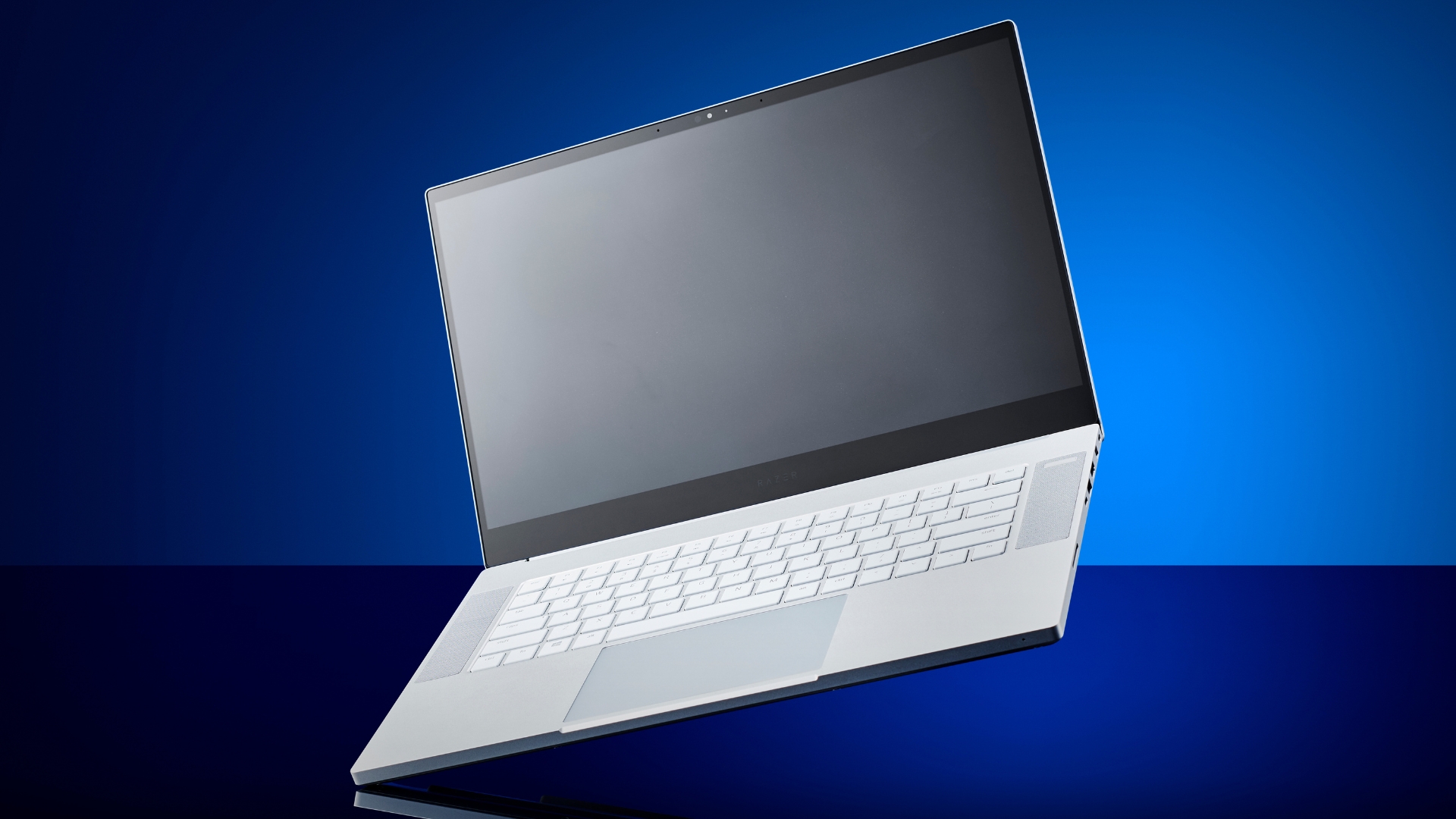
6. Razer Blade 15 Studio Edition
Our expert review:
Specifications
Reasons to buy
Reasons to avoid
💻 The Razer Blade 15 Studio is for the musician who's also a hardcore gamer. Delivering plenty of power for both music-making tasks and so you can run Cyberpunk 2077, this powerful laptop is the perfect go-between for work and play.
✅ Buy if you want power: Gaming laptops need to be supremely powerful, which is what makes this one such a great option for monster music projects.
❌ Avoid if you're a casual music-maker: All that power could be unnecessary for the majority of hobbyists, and it comes at a huge cost too.
Overview: Think of a gaming laptop, and you probably imagine garish colours, RGB lights all over the shop, and enough power under the hood to light up a continent. With the Razer Blade 15 Studio, however, we have a monstrously powerful laptop with its origins in the gaming world, but with its sights very much set on creative pursuits.
Design: There are some nice visual touches, from the customisable RGB backlighting on the keys, but it's really not one of those brightly colored gaming beasts that demands attention, at least on the surface. It looks professional, so you won't feel out of place when you rock up to the studio with it. It's nice and slim too, perfect for traveling with.
Features: With bags of processing power and huge 32GB to 64GB RAM capacity, you certainly aren't going to be lacking when it comes to multi-tasking loads of plugins in a large project file. The spec sheet is impressive, and it also comes with a very powerful GeForce RTX GPU, so if you're a gamer or video editor this laptop will make you very happy indeed.
Usability: Gaming laptops are often powerful enough for music creation as they require beefy CPUs and plenty of RAM to perform. We found the Razer Blade to be more than powerful enough to handle CPU-intensive tasks with multiple plugins, and we absolutely love the clarity of the OLED screen.
Battery life: This is a powerful laptop and if you're gaming with it, don't expect to get much battery life out of it. We got around 5-6 hours with music-making tasks, which isn't particularly impressive on the face of it, but certainly enough to perfect a mix in a pinch.
This is a very powerful, and incredibly expensive laptop, so it's really only suited to those musicians who absolutely need to play CyberPunk 2077 alongside their regular music-making duties.
Test | Results | Score |
|---|---|---|
Battery life | Amongst the shortest here | ★★★☆☆ |
Usability | Incredibly powerful | ★★★★★ |
Display | Very usable screen | ★★★★☆ |
Connectivity | Great variety of ports | ★★★★★ |
Spec comparison
Struggling to decide which laptop to go for? Here's a side by side comparison of all the models in this guide to help you narrow it down.
Model | CPU | RAM | Storage | Battery | Screen |
Apple MacBook Pro M4 | M4 | 42-128GB | 512GB-8TB | Up to 24hrs | 16" |
Apple MacBook Air M2 | M2 | 8-24GB | 256GB-2TB | Up to 18hrs | 13.6" |
Asus ProArt P16 | AMD Ryzen AI 9 | 32-64GB | 1-2TB | Up to 10hrs | 16" |
Apple MacBook Air M4 | M4 | 16-32GB | 256GB-2TB | Up to 18hrs | 15" |
Microsoft Surface Pro 9 | Intel i7 | 16-64GB | 256GB-1TB | Up to 15.5hrs | 13" |
Razer Blade 15 Studio Edition | Intel i7 | 32-64GB | 1TB | Up to 6hrs | 15.6" |
Also consider
In my opinion the above six should cover the vast majortiy of music-makers needs. That said, I appreciate that no two producers are alike, so if you didn't find what you were looking for here are some more great options.
Acer Swift X14
i5-i7 CPU | 16-32GB RAM | 512GB-1TB SSD
With the Swift X14, Acer has squeezed both a powerful CPU and GPU into a slim Ultrabook form and topped it off with a gorgeous OLED screen. It's nice and portable too, making it a great option for mixing while traveling. It's nice and sturdy with minimal flexing in the laptop as a whole, which means it'll put up with being chucked into a backpack and used on the go.
★★★★½
Apple MacBook Air M3
M3 CPU | 8-24GB RAM | 256GB-2TB SSD
The ultra-sleek design of the MacBook Air M3 is perfect for those who need a laptop capable of traveling around with them. It's ultra-lightweight, slim enough to fit into a backpack with plenty of room to spare, and it's available in four different colours too.
★★★★½
Read more: Apple MacBook Air M3 review
Dell XPS 17 (9730)
i7 to i9 CPU | 16-64GB RAM | 512GB-8TB SSD
The Dell XPS 17 has some serious power. For music, gaming, and even a bit of work if you must, this laptop is a match for it all. Bulky compared to some, yes, but you might just not worry about the extra weight when you are immersed in that lovely screen.
★★★★½
Apple MacBook Pro M3
M3 CPU | 8-128GB RAM | 512GB-8TB SSD
The M3 chips offer some of the best performance you'll find anywhere for a music production laptop. It's got bags of power to run VSTs and plugins, and with the higher RAM options available you'll be future-proofing yourself for many years to come. It's effortlessly smooth even on the biggest project files and everything loads super quickly thanks to the SSD.
★★★★½
Samsung Galaxy Book4 Pro
i7-i5 CPU | 16-32GB RAM | 256GB-1TB SSD
The Galaxy Book4 Pro is available in both 14" and 16" models and its OLED screen is a huge highlight with a lovely image quality and 120Hz refresh. It also scores over Apple machines with touch input. There's a nice amount of connectivity, although there are others with more slots for MIDI Controllers and your audio interface.
★★★★☆
How to choose
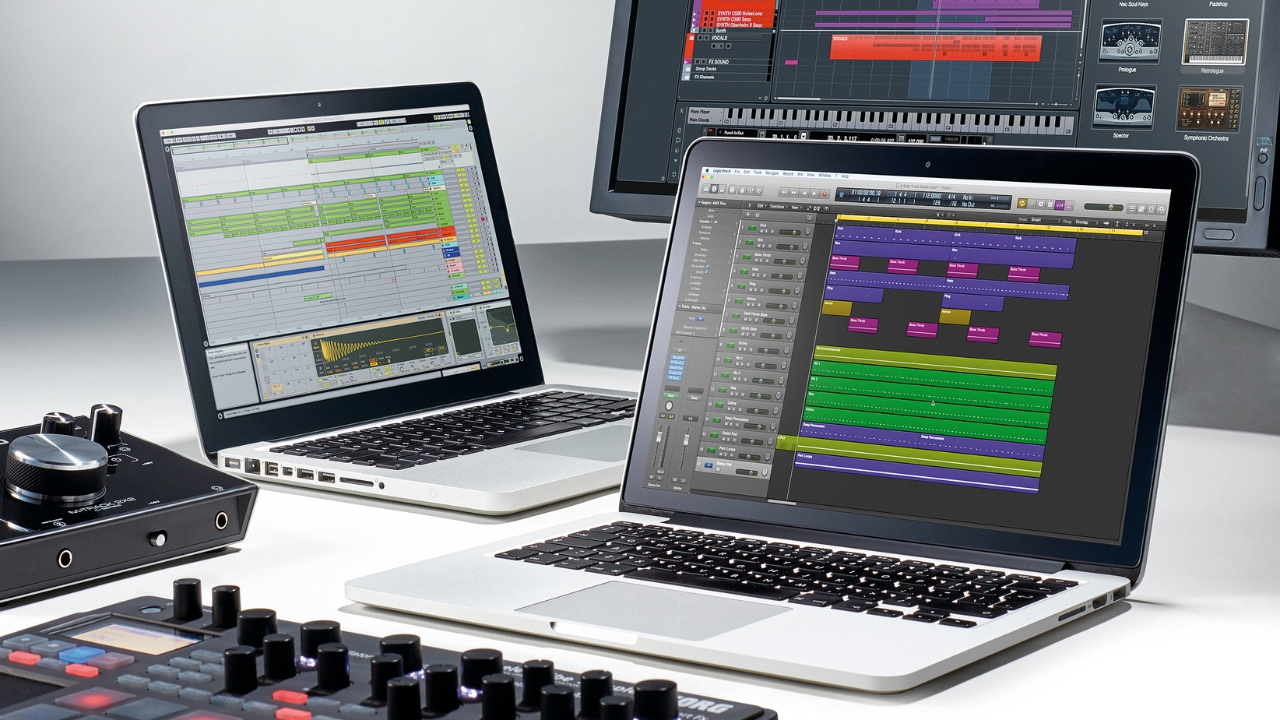
There are three critical factors to consider when selecting a laptop for music production. CPU power, RAM, and storage amount. These are the specifications that matter the most in production, with CPU and RAM controlling how many plugins and instruments you can use, while storage is important for all your core programs.
There are a lot of laptops to choose from in the modern age, and having tested numerous amounts of them, as well as using them on the daily in our own productions, we've put together some advice to help you get the most out of your new laptop shopping.
1. Consider your goals
MusicRadar's got your back
First up, you need to think about what you actually need your laptop for. Are you producing guitar demos for your band? Recording multiple microphones in a treated room? Composing soundtracks for films? The usage of your laptop in your music-making tasks should help you understand what amount of power you require and how much you spend.
If you're just doing simple demos, then you probably don't need huge amounts of CPU power and RAM amounts. Conversely, if you're composing for soundtracks, that's going to use a lot of power running complex orchestral VSTs. Keeping these in mind when doing your shopping will serve you well further down the line.
2. Read reviews
Once you've got your goals in mind, start looking at reviews of the models that interest you the most. A good review will help inform your decision, giving you real-world usage of the laptop in question which will get around any marketing spiel from the manufacturer.
Be aware that not all reviews are impartial like ours though. There's an inherent bias in customer and forum reviews at times, as people often don't like to admit they made a mistake when buying something. MusicRadar reviews are free of bias, completely impartial, and always through the lens of a musician.
3. Compare your laptops
Hopefully, the process of review reading will have narrowed down your selections. Now with a shortlist of laptops, it's time to compare your choices and close things down further. Always keep your music-making goals in mind here, but looking at CPU performance scores, RAM amounts, storage capacities, and anything else that's important to you can be a big help in getting you closer to your end goal.
4. Choose your retailer
Now for the fun part! It's time to decide where to buy your laptop from, whether it's the manufacturer directly or a 3rd party retailer. Using the price comparison tool on Google can be a great way to determine who has the cheapest price. You can also use the filter tools on many retailer websites to help narrow down your search and compare models and price points quickly and easily.
5. Wait for a sale
If you're not in a rush, you could always wait for a sale before buying to see if you can grab some extra money off your preferred model. There are usually some great Black Friday music deals in October and November, and you can grab some great deals in the Memorial Day and President's Day sales too.
FAQs
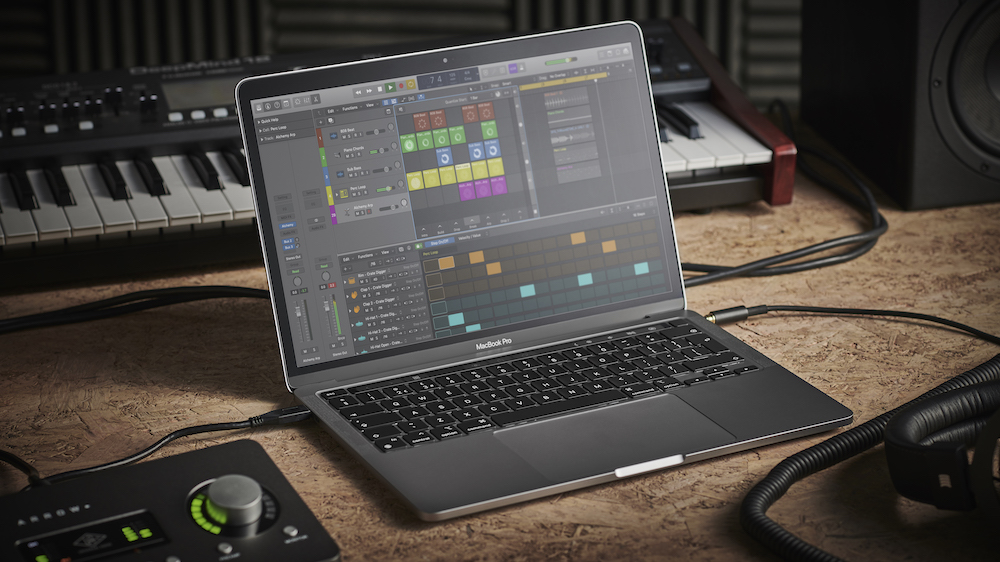
What are the minimum specs for a music production laptop?
If you’re looking at a Windows machine, then you’ll want at least an i5 or AMD Ryzen 5 as the minimum. This will handle most basic production tasks but you may find you need to start rendering audio and effects once you up the track count. You’ll want at least 16GB of RAM, and an SSD to ensure good performance.
How does the CPU and RAM affect performance?
In a laptop the CPU handles processing tasks, like running your operating system, your DAW, and the plugins you use to process audio. RAM on the other hand temporarily stores data for the CPU to access. Doing it this way is much quicker than constantly recalling data from a hard drive, and allows you to run multiple apps at once.
With this in mind the CPU and RAM go hand in hand when it comes to the performance of any computer, so having an ample supply of both means that your computer will run a lot smoother.
Is Mac or Windows better for music production?
In my personal opinion, Mac is better. There’s a reason the majority of pro studios run on Mac systems, and that’s because they’re better for audio production. The efficiency of the Silicon chip-equipped Macs has further solidified that, massively improving the performance that a Mac is capable of.
That said, there’s no reason you can’t produce great music on a Windows laptop. The new ARM chips deliver much-improved performance for laptops and driver stability is much better than it once was. A Windows laptop will also deliver more performance for less money, but it just won’t be as stable as a MacBook.
What brands are the best for music production laptops?
The obvious answer here is Apple, but brands like Asus, Dell, Lenovo, Acer, Samsung, Razer, and Microsoft themselves can all deliver good laptops for music production. Realistically it’s not so much about the brand, but the specification when it comes to music production. So long as you have a good CPU, decent amount of RAM and an SSD it doesn’t really matter what brand you buy.
Do I need a graphics card for music production?
No you don’t. Many laptops come with GPUs anyway, but this is one thing you can skimp on if you’re looking for a machine purely for music production. Of course, if you’re also the video editor for your band then having a GPU can be a big benefit for editing videos to help promote your music.
Can a laptop handle heavy music production tasks?
A few years ago I would have preferred a desktop for music production but as the new CPUs get more powerful and laptops get more efficient, nowadays a laptop is more than capable of handling intense production tasks. I use a laptop as the hub of my home studio, which I can then take to the analogue studios I work in, which allows me to take my projects and plugins anywhere I need them.
What accessories will I need for producing music on a laptop?
One of the must-buys for me is an external hard drive. Even with a laptop that has good storage you’ll soon fill it up with sample libraries, plugins, and recorded audio, so that should be your first port of call. Thankfully hard drives are relatively cheap these days so you can pick up a 2GB SSD for less than $/£100.
I would also recommend a USB hub to expand your connectivity. This is one place where laptops lag behind versus a desktop computer, and is particularly useful if you use a MIDI controller or your laptop has limited connectivity. It can also offer the ability to connect to external screens, and give you a wired internet connection.
Does the type of hard drive matter for music production?
It doesn’t matter in terms of its ability to store data, but it does matter in terms of how quickly you can access your data. SSDs are lightyears ahead of the older HDD when it comes to retrieving and transferring data, so if your budget allows it I’d highly recommend you get an SSD. Not only does it make your laptop feel faster, but they’re also less likely to fail over time as there are no moving parts.
Key terms
- ASIO (Audio Stream Input/Output): A low-latency driver protocol for Windows computers.
- Benchmarking: Testing a production laptop via software or by performing tasks. I use the D-Verb test to stress test laptops for music production in this guide, but there are lots of others you can do.
- Bus-powered: Refers to devices that draw power from a USB port. MIDI controllers and keyboards as well as audio interfaces are often bus-powered
- Chipset: The heart of the motherboard in a computer, the chipset manages the data flow between the CPU, RAM, and other components.
- CPU (Central Processing Unit): The brain of your laptop which controls all the applications and calculations required to run them.
- DAW (Digital Audio Workstation): The software used to record, edit, and produce music.
- GPU (Graphics Processing Unit): More commonly known as a ‘graphics card’, this component controls the video aspects of a laptop.
- HDD (Hard Disk Drive): An older form of storage for computers that uses magnets to retrieve data from a spinning disk. More prone to failure than an SSD.
- Latency: This is the delay in your laptop processing audio going in and playing it back out of the speakers. Getting this as low as possible is key to good performance.
- MIDI (Musical Instrument Digital Interface): A method of communication that allows musical devices to send signals to digital software.
- OS (Operating System): The type of software that your computer uses to run all its programs. The major ones are Apple or Microsoft, but there are others like Linux and Ubuntu.
- Plugin: A software instrument or effect that you use in your DAW.
- RAM (Random Access Memory): Temporary storage that your laptop uses for performance. It’s key to have a lot of this for music production purposes.
- Sample library: A collection of recorded sounds used by instruments or as audio in music production.
- SSD (Solid State Drive): A newer, faster type of storage that uses integrated circuits to store data. Much faster and more reliable than an HDD.
- Thunderbolt: A modern type of connection port that enables faster data transfer. Newer Thunderbolt ports are interchangeable with USB-C ports.
- Throttling: This is what happens when you push your laptop too hard and the performance stutters due to excess heat. Results in a slowdown in performance.
- USB (Universal Serial Bus): A port used to connect lots of different devices to a computer. Comes in various formats each with a different type of connector.
- VST (Virtual Studio Technology): A plugin type that allows virtual instruments to run inside software, created by Steinberg.
How we test
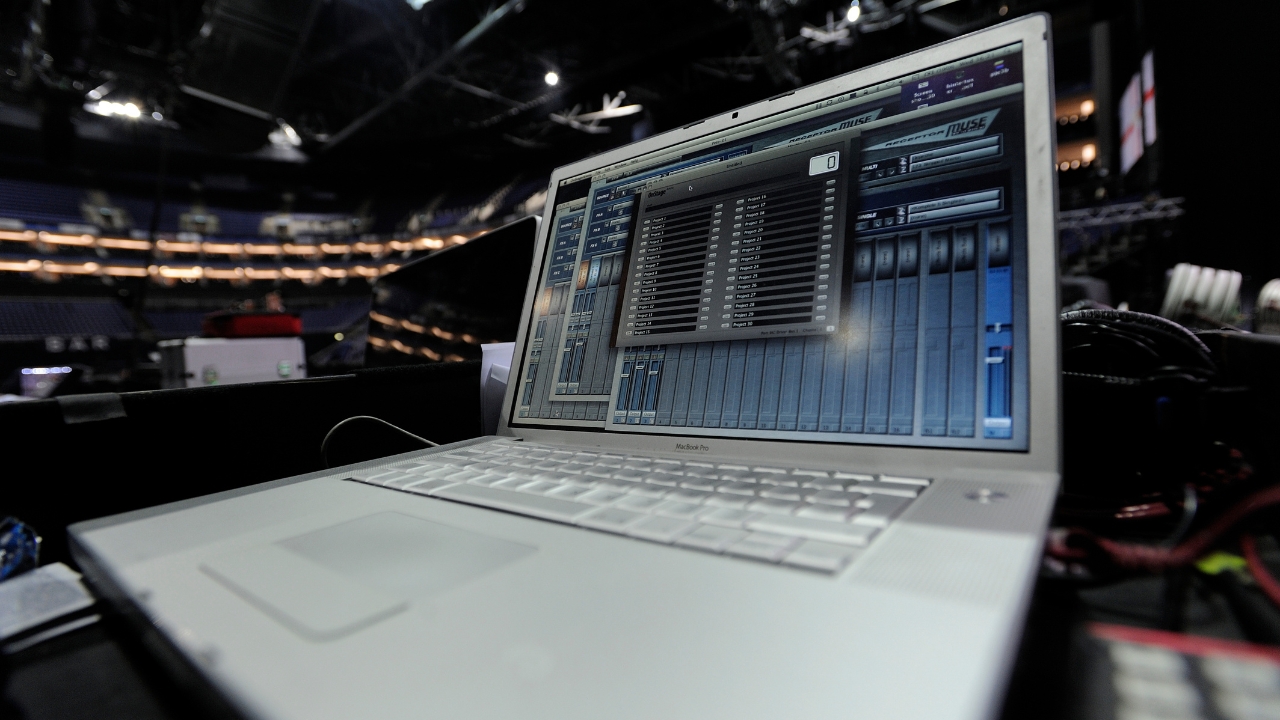
So, clearly there is a lot to think about when choosing the best laptop for music production.
It's easy to see why a good all-round laptop can fetch a premium price tag, but, as with anything from the best samplers and studio monitors to home studio mixers, you get what you pay for, so it's always wise to get the best you can afford, rather than skimping and regretting your purchase later (often quicker than you thought). Our price comparison software will come in handy here. Next to each product entry on this guide our price widgets will display the best deals online right now to save you shopping around.
In this guide we don’t focus on various legacy ins and outs, such as the number of USB sockets, or lack of, for your audio interface, and so on. With so many dongle and docking options available, this shouldn’t be a deciding factor in your purchasing journey. In this guide we're talking sheer horsepower for music-making. For example, can your portable rig cope with large multitrack sessions, running handfuls of plugins and MIDI instruments?
When testing a laptop for music production, we take into account a variety of design aspects, features and power. On a basic level, a music production laptop must be portable and powerful. For the latter consideration, that's why we often include those gaming laptop PCs as they are designed to deliver clout.
Obviously a lightweight design is great, but we also need connections - Thunderbolt, USB-C or even A for older interfaces. Really the more the better, although most Apple laptops now only feature a couple of Thunderbolt 3 ports which you can just about get away with for music.
In terms of power, it is often difficult to compare processors just on their specs as they can work very differently in a real world music production environment. With that in mind, where possible we compare and contrast by using standard DAW projects from the likes of www.logicprohelp.com and www.music-prod.com. Here you simply run the project and add audio tracks until your machine falls over. You then get an idea of the power of a particular processor in a real production scenario.
Finally we'll also look at screen and speaker performances. Certainly Apple excels at these with recent speaker designs that can be (just) used for mixing plus vibrant screens that help you see everything your DAW has to offer.
Read more about how we test music making gear and services at MusicRadar.
Latest updates
18/10/25: The guide has been updated with two new entries in the Asus ProArt P16 and the Apple MacBook Air M4, both of which have recently been reviewed. The overall number of laptops in the guide has been reduced to make it easier for readers to decide. The FAQs section has been totally revamped, and a brand new glossary of key terms has been added into the guides. Expert verdict boxes have been added to products with reviews to provide extra insight.
Related buyer's guides
- Our pick of the best Macs for music production
- Best mouse for music production: mice, trackpads and trackballs
- Check out our guide to the best budget PCs for music production
- Our pick of the best PCs for music production
- Best DJ laptops: PC and Mac options for the booth and beyond
- Organise your recording space with the best studio desks
Want all the hottest music and gear news, reviews, deals, features and more, direct to your inbox? Sign up here.

Matt is a Junior Deals Writer here at MusicRadar. He regularly tests and reviews music gear with a focus on audio interfaces, studio headphones, studio monitors, and pretty much anything else recording-related. Matt worked in music retail for 5 years at Dawsons Music and Northwest Guitars and has written for various music sites including Guitar World, Guitar Player, Guitar.com, Ultimate Guitar, and Thomann’s t.blog. A regularly gigging guitarist with over 20 years of experience playing live and producing bands, he's also an alumnus of Spirit Studios, where he studied studio engineering and music production.
- Andy Jones
- Simon ArblasterVideo Producer & Reviews Editor
- Chris Corfield
